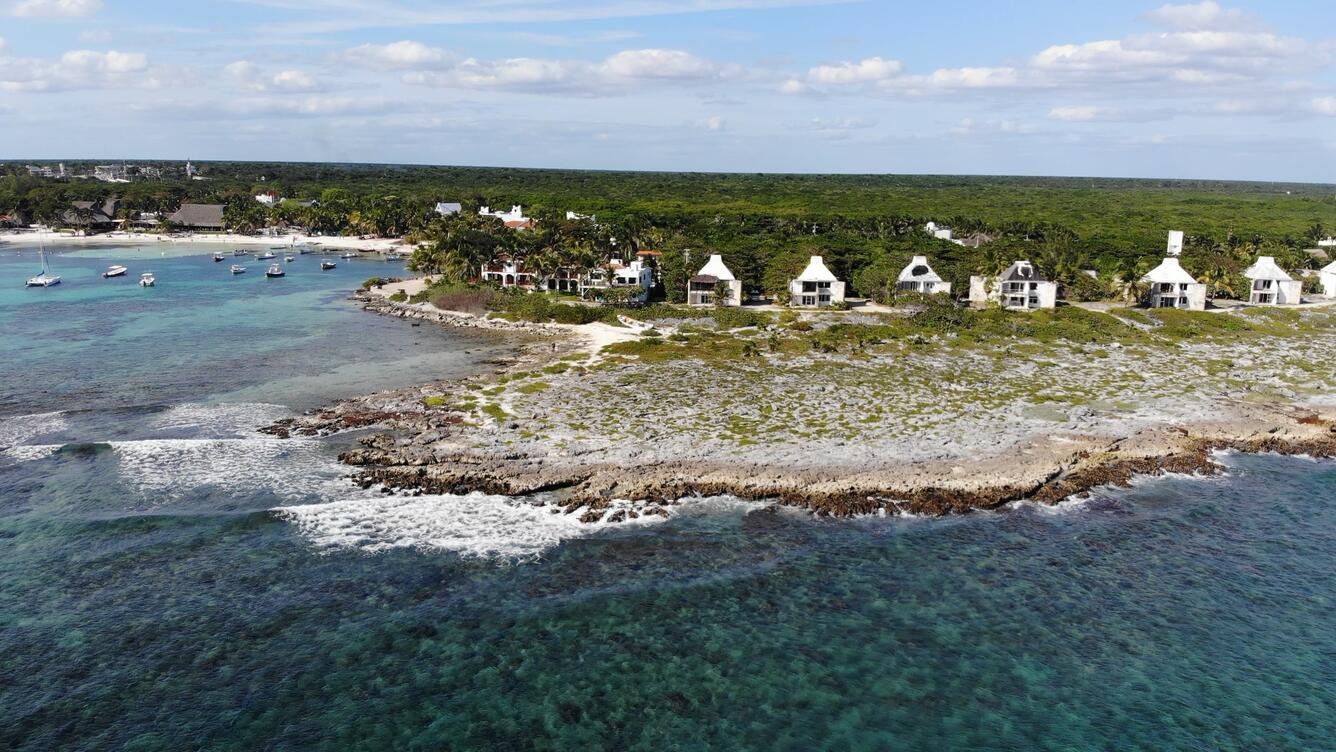New science shows that storms can provide an influx of oxygenated water into underwater caves, which supports the food web and enhances the biological removal of methane, a potent greenhouse gas.
This article is part of the September-November 2022 issue of the Sound Waves newsletter.
Tropical storms and hurricanes visibly impact coastal communities and ecosystems, often with disastrous effects. However, underwater caves may benefit from these extreme weather events. New science shows that stormwater provides underwater caves with an influx of oxygen that is critical to supporting microorganisms—an integral part of the food web—and limiting the release of harmful greenhouse gases into the ocean and atmosphere.
In the study, trained scientific cave divers deployed monitoring devices in cave passages within the Ox Bel Ha Cave System in the northeastern Yucatan Peninsula of Mexico. The devices monitored water chemistry, including oxygen and methane levels, before, during, and after Tropical Storm Hannah for a total of five months. The study was led by the U.S. Geological Survey and the National Research Council of Italy and coauthored by the University of Maryland.
Results show that intense rainfall during the tropical cyclone forced the mixing of these otherwise isolated waterbodies and contributed to a significant increase in oxygenated water. This influx of oxygen helps microorganisms “breathe,” or respire, leading to an increase in energy. With increased energy, the microbes consume more methane and therefore limit the amount released into the ocean and ultimately the atmosphere. In the two and a half months following the storm, the methane concentrations did not return to pre-storm levels, indicating that large-scale rainfall events have lasting effects on the underwater cave’s carbon cycle.
“In short, when this cave ‘takes a deep breath of oxygen’ during tropical storms, it could exhale a lot less of the greenhouse gas methane,” said John Pohlman, a USGS research chemist and a coauthor of the study. “While oxygen levels are known to be lower in these types of underground caves, this new study highlights how sensitive these systems are to oxygen and how critical it is to the survival of the ecosystem. The findings also help understand how methane fluctuates in coastal environments.”
Ox Bel Ha is one of the largest known cave networks in the world. It is recognized as a karst subterranean estuary—a large underground environment comprised of soluble rocks, such as limestone, where freshwater from rainfall and salt water from the ocean mix. The tropical plants in the forest overlying Ox Bel Ha absorb carbon dioxide from the atmosphere and store it in the plant’s roots and soil. “In a series of earlier studies, we found that as the roots and soil break down over time, some amount of carbon in the form of carbon dioxide or methane is slowly released into underwater caves through groundwater,” says David Brankovits, the paper’s lead author and a Marie Curie Fellow at the Italian Water Research Institute. “This methane supports the food web in these hidden ecosystems by serving as a primary food source for the microorganisms living there.” These sensitive animals serve as early warning indicators for habitat degradation caused by pollution, land-use change, and the effects of climate change. “The cave-adapted animals are the metaphorical canaries in the coal mine for the condition of water quality,” said John Pohlman.
Approximately 16% of the world’s coastlines have a geology similar to the studied area. This research can help land and resource managers better understand how to maintain and preserve these unique, yet globally distributed, ecosystems. For example, decision makers could use this information to regulate the amount of organic matter in the water, some of which is natural (e.g., forest and wetland debris), while the rest is pollution from nearby communities. Oxygen is used to break down organic matter, so when there is an excess in the water, it limits the amount of oxygen available for other purposes.
Learn more by reading the study, “Oxygenation of a karst subterranean estuary during a tropical cyclone: mechanisms and implications for the carbon cycle,” published in the journal of Limnology and Oceanography on September 23, 2022. The publication team included Dr. David Brankovits (Water Research Institute, National Research Council of Italy and USGS Woods Hole Coastal and Marine Science Center), Dr. John Pohlman (USGS Woods Hole Coastal and Marine Science Center), and Dr. Laura Lapham (Chesapeake Biological Laboratory, University of Maryland).
Additional information on the food web and the role of methane within the Yucatan Peninsula can be found in a previous study, “Methane- and dissolved organic carbon-fueled microbial loop supports a tropical subterranean estuary ecosystem,” published in Nature Communications on November 28, 2017. The USGS highlighted this study in a National News Release and in an article in the Sound Waves newsletter.





